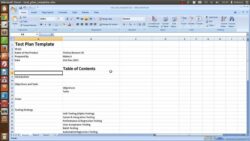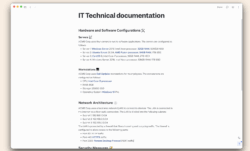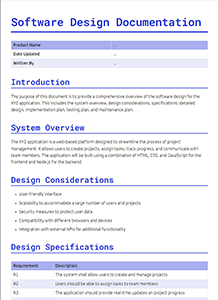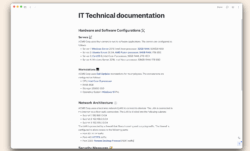Alright, so you’re diving into the world of software development, and you’ve heard whispers about the importance of documentation. Maybe your boss, a senior developer, or even that ever-present coding guru mentioned something about an “IEEE standard” and a “software development documentation template.” Don’t panic! It might sound intimidating, but it’s really just a structured way to keep your project organized, understandable, and, well, less of a headache down the road. Think of it as a detailed instruction manual for your software project, from start to finish.
This isn’t just about creating a massive, unreadable document that no one will ever touch. It’s about producing relevant, helpful, and well-structured information that guides developers, testers, users, and even future maintainers through the lifecycle of your software. Good documentation can save countless hours of debugging, prevent misunderstandings, and make it easier to onboard new team members. It’s an investment that pays off significantly, especially for complex and long-term projects. Plus, having solid documentation makes your project look professional and well-managed.
In this article, we’ll break down the concept of the ieee software development documentation template. We’ll explore what it is, why it’s important, and how you can use it to streamline your software development process. We’ll cover key sections, provide tips for creating effective documentation, and help you understand how to adapt the template to fit your specific project needs. So, let’s get started and demystify this essential aspect of software engineering!
Why Use an IEEE Software Development Documentation Template?
So, why bother with an IEEE standard, and why use a template at all? The answer is simple: consistency, clarity, and a higher chance of success. When everyone on your team follows the same documentation guidelines, it becomes much easier to understand each other’s work, track progress, and maintain the software over time. Imagine trying to assemble a complex piece of furniture without any instructions, or with instructions written in different languages and using different measurement systems. Chaos, right? That’s what software development can be like without proper documentation. An ieee software development documentation template can help prevent that.
The IEEE (Institute of Electrical and Electronics Engineers) sets standards for a wide range of technical disciplines, including software engineering. Their standards provide a common framework for documenting various aspects of the software development process. This includes everything from requirements specifications and design documents to test plans and user manuals. Using an IEEE template ensures that your documentation covers all the essential elements and is organized in a logical and consistent manner.
Think of it as a blueprint for your software. It outlines the goals of the project, the architecture of the system, the specific functions of each component, and the procedures for testing and deploying the software. It’s a single source of truth that everyone can refer to throughout the development lifecycle. This reduces ambiguity, minimizes misunderstandings, and helps to keep everyone on the same page.
Furthermore, using a well-defined template saves you time and effort. Instead of starting from scratch each time you need to create a document, you have a ready-made structure to work with. You can simply fill in the relevant information for your project, knowing that you’re following industry best practices. This is especially useful for large or complex projects, where the documentation can become overwhelming if not properly managed.
Finally, IEEE templates often include sections dedicated to risk assessment, configuration management, and quality assurance. These sections help you to proactively identify and address potential problems, ensuring that your software is robust, reliable, and meets the needs of your users. By incorporating these elements into your documentation, you increase the likelihood of a successful project outcome.
Key Elements of an IEEE Software Development Documentation Template
So, what exactly goes into an IEEE software development documentation template? While the specific sections and level of detail can vary depending on the project, there are some core elements that are typically included. Let’s break down some of the key components you’ll likely encounter.
First, there’s usually a **Requirements Specification**. This section defines what the software is supposed to do. It outlines the functional and non-functional requirements, specifying the features, performance criteria, security considerations, and other essential aspects of the system. This ensures that everyone understands what the software needs to achieve, providing a solid foundation for the entire development process.
Next comes the **Design Document**. This section describes how the software will be built. It includes details about the system architecture, the database design, the user interface, and the algorithms that will be used. It’s essentially a blueprint for the software, showing how all the different components will work together to meet the requirements.
The **Test Plan** is another critical component. This section outlines how the software will be tested to ensure that it meets the requirements and is free of defects. It includes details about the test cases, the testing environment, and the criteria for passing or failing each test. This helps to ensure that the software is reliable and performs as expected.
Then, there’s the **User Manual**. This section provides instructions on how to use the software. It includes details about the user interface, the different features, and how to troubleshoot common problems. A clear and well-written user manual is essential for ensuring that users can effectively use the software.
Finally, a good template also includes sections on **Configuration Management**, outlining how changes to the software will be tracked and managed, and **Risk Management**, which identifies potential risks and outlines mitigation strategies. These sections help to ensure that the software is properly maintained and that potential problems are addressed proactively. Remember, the specific sections and level of detail will vary depending on the project, but these core elements provide a good starting point for creating comprehensive software development documentation.
Creating software documentation is not a waste of time, but an important investment in the project success, making it easier to maintain, understand, and evolve. Documentation will always be helpful for future team members working on the software.
In the grand scheme of things, the time and effort you invest in creating thorough software development documentation using a solid template will pay dividends in the long run. Your project will be more organized, your team will be more aligned, and your software will be more robust and reliable.



